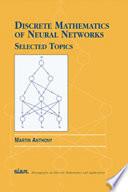
Discrete Mathematics
As an introduction to discrete mathematics, this text provides a straightforward overview of the range of mathematical techniques available to students. Assuming very little prior knowledge, and with the minimum of technical complication, it gives an account of the foundations of modern mathematics: logic; sets; relations and functions. It then develops these ideas in the context of three particular topics: combinatorics (the mathematics of counting); probability (the mathematics of chance) and graph theory (the mathematics of connections in networks). Worked examples and graded exercises are used throughout to develop ideas and concepts. The format of this book is such that it can be easily used as the basis for a complete modular course in discrete mathematics.
- ISBN 13 : 0080928609
- ISBN 10 : 9780080928609
- Judul : Discrete Mathematics
- Pengarang : Amanda Chetwynd, Peter Diggle,
- Kategori : Mathematics
- Penerbit : Elsevier
- Bahasa : en
- Tahun : 1995
- Halaman : 224
- Halaman : 224
- Google Book : https://play.google.com/store/books/details?id=8XzNCgAAQBAJ&source=gbs_api
-
Ketersediaan :
As an introduction to discrete mathematics, this text provides a straightforward overview of the range of mathematical techniques available to students.









